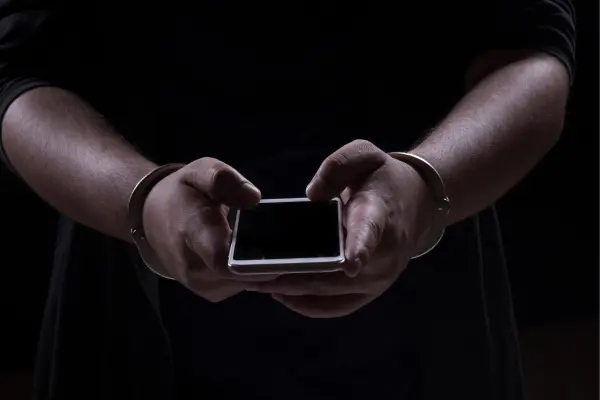
PENALTIES FOR DISTRIBUTING DIGITAL CHILD SEXUAL ABUSE CONTENT
One of the most severely punished offenses is the distribution or commercialization of child sexual abuse material. This includes images or videos that depict minors’ genitals, nudity with sexual connotation, or any form of child exhibitionism. Bolivian law does not differentiate between real representations or those generated by technological means such as artificial intelligence.
The offender’s intent, particularly when pursuing economic or social benefit, aggravates the legal situation. If a person distributes this type of content through social media, cloud services, or messaging apps for profit or recognition, they may face up to fifteen years of imprisonment.
This reflects a firm criminal policy against systematic sexual exploitation in digital environments, recognizing the psychosocial impact on victims and on society at large.
LEGAL CONSEQUENCES FOR POSSESSION OF CHILD PORNOGRAPHY
It is not necessary to distribute or produce the material to incur a criminal offense. Mere possession, storage, or acquisition is also punishable. It is considered a crime even if the content was digitally created without involving a real minor, as long as it sexually portrays a person under age.
For example, if a user downloads and saves images of minors—whether real or generated by artificial intelligence—in explicitly sexualized situations, they incur criminal liability, even if the content was not shared. The subjective purpose—such as personal gratification—is enough to constitute the offense.
Penalties in these cases can reach up to ten years in prison, reinforcing the autonomous nature of the crime and prioritizing the comprehensive protection of children.
PRACTICAL EXAMPLES OF PUNISHABLE CONDUCT
- Example 1: An adult downloads a file package from a P2P network containing real photographs of minors in suggestive poses. Even if they are not shared or sold, simply storing them on a hard drive already constitutes a criminal offense.
- Example 2: A person uses an artificial intelligence tool to generate images of alleged minors in sexualized situations and saves them on their mobile device. Even though no real victim was involved and the content was not distributed, they incur criminal liability for possessing illicit material.
- Example 3: An individual receives images of child sexual abuse content via instant messaging and decides to forward them to a third party. This action is considered distribution and may be punished with up to fifteen years of imprisonment, especially if done for profit.
AGGRAVATING FACTORS IN DIGITAL SEXUAL CRIMES AGAINST MINORS
The law establishes circumstances that increase the applicable penalties. These include recidivism, repeated commission of the offense, and participation in criminal organizations. When it is proven that the offender has engaged in this type of conduct more than once or as part of a network, the sentence is increased by one third of the established maximum.
These aggravating factors are designed to provide enhanced protection against persistent and structured criminal patterns, especially those linked to child exploitation networks.
In summary, the current criminal framework in Bolivia establishes severe penalties for any form of production, possession, and distribution of digital content that sexualizes minors. These provisions are based on the principle of the best interests of the child, recognized both by the Political Constitution of the State and by international instruments such as the Convention on the Rights of the Child.
Our law firm provides specialized legal services in cybercrime and child and adolescent protection. If you are facing a similar situation or require legal advice, do not hesitate to contact our professional team.
Frequently Asked Questions (FAQs)
Is it a crime to possess AI-generated images of minors?
Yes. If such images sexualize underage individuals, their mere possession is considered a crime.
What happens if only one image was downloaded but not shared?
Possession alone constitutes a punishable offense, regardless of distribution.
Is it considered a crime if the minor does not exist in reality but appears real?
Yes. Artificial or fictional representations with sexualized intent are also punishable.
What elements aggravate the penalty for these offenses?
Recidivism, repeated conduct, and participation in criminal organizations are aggravating factors.
Do the penalties apply only if there is financial gain?
No. Personal consumption intent is sufficient for the conduct to be punishable.
The content of this article does not reflect the technical opinion of Rigoberto Paredes & Associates and should not be considered a substitute for legal advice. The information presented herein corresponds to the date of publication and may be outdated at the time of reading. Rigoberto Paredes & Associates assumes no responsibility for keeping the information in this article up to date, as legal regulations may change over time.



